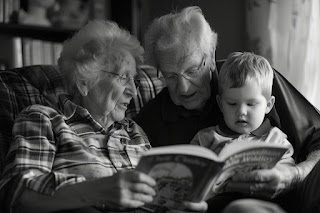Embracing Diversity: The Power of Representation in Children's Literature
As an educator, I've always believed in the transformative power of storytelling, especially when it comes to introducing young minds to the rich tapestry of cultures and traditions that make up our world. In my classroom, one of my favourite activities is exploring traditional tales from various cultures, highlighting the importance of diversity and representation in children's literature. Let's delve into why this is so crucial and how it enriches the learning experience for both students and educators alike.
Celebrating Cultural Heritage:
Traditional tales serve as windows into the cultural heritage and values of different societies. By sharing stories from around the world, we not only expose children to diverse perspectives and experiences but also celebrate the richness of human culture. Whether it's exploring the folklore of Native American tribes, the myths of ancient Greece, or the legends of African tribes, each story offers valuable insights into the customs, beliefs, and traditions of its origin.
Fostering Empathy and Understanding:
Reading stories featuring characters from diverse backgrounds cultivates empathy and understanding in children. When they see themselves reflected in literature or encounter characters who are different from them, they develop a deeper appreciation for the complexities of the human experience. This helps break down stereotypes, promote inclusivity, and build bridges between cultures.
Exploring Different Worldviews:
Traditional tales often reflect the unique worldview and values of the cultures from which they originate. For example, the symbolism of dragons in Western and Eastern cultures offers a fascinating contrast. In Western folklore, dragons are typically portrayed as fearsome creatures to be vanquished by brave heroes, while in Eastern traditions, they are revered as symbols of wisdom, strength, and good fortune. Exploring these cultural nuances not only expands children's horizons but also fosters a sense of curiosity and respect for diverse perspectives.
Introducing Diverse Role Models:
Representation in literature is vital for children to see themselves reflected in stories and to encounter diverse role models. Whether it's strong, resourceful heroines breaking gender stereotypes or protagonists from marginalised communities overcoming obstacles, diverse characters empower children to embrace their identities and aspire to greatness regardless of their background.
One Book, Many Worlds:
One book that has resonated deeply with my students is "Crafty Chameleon," an African tale of how the cheetah and the crocodile don't bother the chameleon. Through this captivating story, children are transported to the vibrant landscapes of Africa and introduced to the resourceful and cunning character of the chameleon. As we delve into the tale, we not only appreciate its narrative richness but also explore its cultural significance, uncovering the traditions and beliefs of African communities.
Diversity and representation in children's literature are essential for fostering empathy, understanding, and appreciation for the world's myriad cultures and traditions. By embracing traditional tales from different countries and cultures, we empower children to become global citizens who celebrate diversity, champion inclusivity, and strive for a more equitable world. As educators, let's continue to open doors to new worlds and inspire generations of readers to explore, learn, and grow through the magic of storytelling.




Comments
Post a Comment
Hi there, Thanks for taking the time to share.